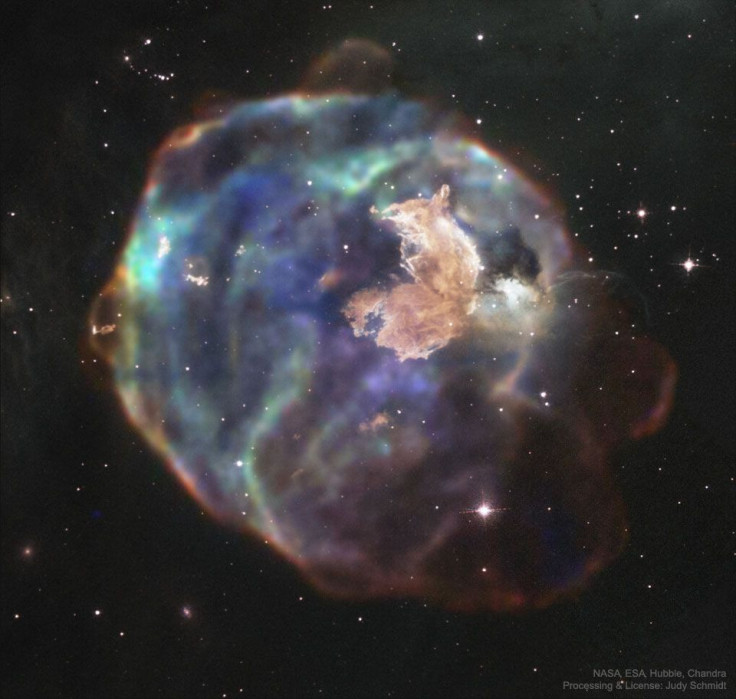Halloween Coincidence: A 'Ghost Star' Photographed In Deep Space [Photo]
KEY POINTS
- The "ghost star" is a remnant of the Vela supernova
- It is named after the southern constellation Vela, also known as The Sails
- The supernova exploded around 11,000 years ago
In a recent photo release, European Space Observatory (ESO), revealed an image of a "ghost star" matching the mood of the season.
The so-called ghost star is a remnant of the Vela supernova and was captured by the VLT Survey Telescope, hosted at the ESO's Paranal site in Chile.
The haunting imagery had multiple interpretations by the people who first saw it. "Its spooky filamentary structure evoked different things to different members of our team, from intricate spider webs to ethereal specters," Juan Carlos Munoz-Mateos, an ESO spokesperson, told Space.com.
1/ A spooky spider web 🕷, magical dragons 🐉 or wispy trails of ghosts 👻? What do you see in this image of the Vela supernova remnant?
— ESO (@ESO) October 31, 2022
Look closer 🔗 https://t.co/K4Egr7UDmM
📷 @ESO /VPHAS+ team. Acknowledgement: Cambridge Astronomical Survey Unit pic.twitter.com/ECAgzbEBJ9
"To me, this ghostly appearance is very poetic, because we're literally seeing the remains of a long-gone star, so this metaphor works both visually and from an astrophysical point of view," the spokesperson added.
A supernova is the result of the explosion of a dying star which leaves behind a nebula of gas and stellar matter. This particular supernova, named after the southern constellation Vela (The Sails), exploded around 11,000 years ago, ESO wrote in its photo release.
In the 554-million-pixel image of the supernova remnant, nine full Moons could fit in, and this is just a part of the larger cloud. The supernova is about 800 light years away from Earth and is one of the closest known to our planet, according to ESO. Being so close, it is possible for it to have been visible to the human eye.
"As for its luminosity, it's hard to say because there's a wide variety of luminosities," Munoz-Mateos said. "It was probably fainter than Venus, but more prominent than SN 1987A and not as bright as SN 1006. Since this is well before the earliest forms of writing it's unlikely we have any sort of record, but it might have been noticed by people back then."
A supernova is said to occur when a large enough star, roughly eight to 15 solar masses, collapses onto itself. The collapse is due to a shortage of hydrogen and helium fuel. Without the energy from nuclear fusion to hold it, the star gives in to its own gravity as the outer layers begin to rapidly collapse into the core.
As the star exploded, the outer layers of the star were spewed out into the surrounding gas, producing the filaments that can be seen in the image. A neutron star is what is left of the dying star. A neutron star is an ultra-dense ball in which the protons and electrons are compressed together into neutrons.
The neutron star of the Vela supernova is present near the top-left corner of the image and is not visible. It is a pulsar that spins on its axis at a rate of more than 10 times per second, ESO noted.

© Copyright IBTimes 2024. All rights reserved.





















